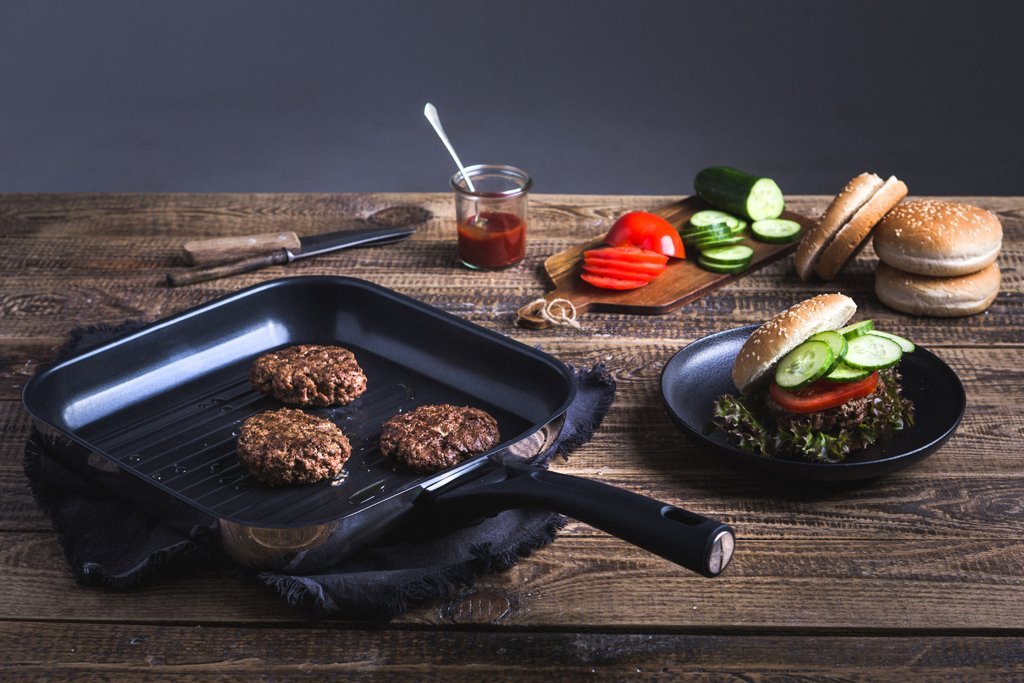
For those who relish the smoky, rich flavors of barbecued meals, the idea of grilling salmon on a pan can be both intriguing and mouthwatering. To do this right, you need to master some techniques that will help you achieve a delicious and perfectly cooked salmon with crispy skin. **Barbecue enthusiasts** understand that any grilling session, whether it's for meat or seafood, requires attention to detail, and grilling salmon with its skin on is no exception. Let's dive into how to grill salmon with skin in a pan and make the most out of your culinary adventure.

Why Grill Salmon with Skin On?
Grilling salmon with its skin on offers multiple benefits. Firstly, the skin acts as a protective barrier, allowing the fish to cook evenly without falling apart. Additionally, the skin contains essential fats that melt into the fish, adding flavor and moisture. **Barbecue enthusiasts** not only crave for flavor but also appreciate texture, and crispy salmon skin delivers just that.

Choosing the Right Pan for Grilling
Selecting the correct pan is integral to the success of grilling salmon. While a non-stick pan can work in a pinch, using a cast iron grill pan makes a significant difference. These pans heat evenly and retain high temperatures, ideal for getting that beautiful, crispy skin. Make sure your pan is thoroughly heated before placing the salmon skin-side down.
Preparing Your Salmon
Before you even think about cooking, proper preparation is key. Ensure that your salmon fillets are fresh. Pat them dry with a paper towel, as moisture on the surface can prevent the skin from crisping up. Season the fillets generously with salt and pepper. For an extra layer of flavor, consider a marination period of about 30 minutes with some olive oil, lemon juice, and herbs like dill or thyme.

Next Steps: Cooking Your Salmon
Once your pan is hot, add a few tablespoons of vegetable oil and let it shimmer. Place each fillet skin-side down in the pan. It's essential to resist the urge to move them around. Let them cook for about 5-7 minutes on the skin side. You'll know they are ready to flip when the edges are opaque and the skin releases easily from the pan. Cook the other side for an additional 2-3 minutes.
Troubleshooting Common Issues
Even with preparations, issues can arise. If the salmon sticks to the pan, it might be due to insufficient oil or the skin isn't crispy enough to release on its own. Another common problem is overcooking, which can dry out your salmon. To avoid this, monitor the internal temperature. A perfectly cooked salmon should reach an internal temperature of 145F.

Serving Your Pan-Grilled Salmon
Now that your salmon is ready, it deserves a worthy presentation. Serve your grilled salmon with a side of grilled vegetables or a simple green salad. The crispy skin offers a delightful texture that complements various side dishes. With each bite, you'll experience a mix of smoky, earthy flavors of grilled salmon that only a pan can deliver.
Additional Grilling Tips
Experimenting with different seasoning rubs can transform your usual salmon grilling routine into a gourmet experience. Try using a lemon zest, garlic, and parsley mixture for an added burst of flavor. Additionally, machining ingredients like cedar planks can evoke a smoky essence that elevates the taste profile.
Cleaning Your Pan Post-Grill
Cleaning your grill pan after cooking is another crucial step in the overall experience. Since salmon skin can leave stubborn residues, using a brush designed for cast iron pans works wonders. Avoid using harsh detergents as they can strip away the pan's seasoning. For a detailed guide on proper cleaning, check out this guide.
FAQs
Is it better to cook salmon with skin on or off?
Cooking salmon with skin on is usually better because the skin acts as a barrier that helps the fish retain moisture and flavor. It also helps protect the fish from overcooking.
How can I tell if my salmon is cooked through?
You can tell if your salmon is cooked through by checking its internal temperature. It should read 145F. Additionally, the flesh should be opaque and separate easily with a fork.
Can I reuse the marinade?
It's not recommended to reuse the marinade that came into contact with raw fish due to bacterial contamination. Always prepare a fresh batch if needed for additional basting or serving.
A grill pan lets year-long summer vibes
As an Amazon Associate, I earn from qualifying purchases.



